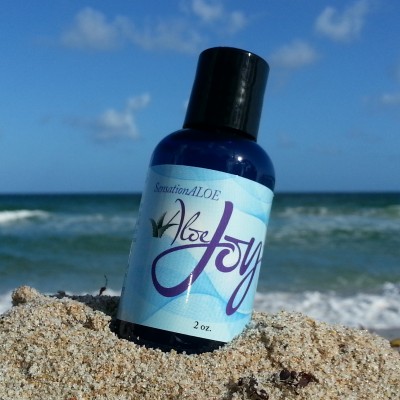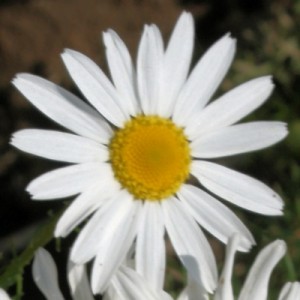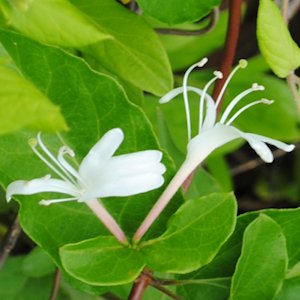
Caesalpinia Spinosa Gum
Native to the Andean valleys of Peru and locally known as “Tara,” Caesalpinia spinosa is rich in polysaccharides. Tara gum has high natural resistance to most pests and diseases and is deemed safe for use as a food additive. It is colorless and odorless. The plant has a long tradition in herbal medicine, often being used to treat wounds and as a gargle for sore throats. It is applied directly on skin irritations to help soothe for comfort and initiate healing. It has the added benefit of further thickening Aloe Joy®.
Sea Mayweed

In the harsh conditions of the coastlines of Northern Europe, Scandinavia and Icelands grows an incredibly hardy plant that is able to resist the physical stress of waves, tides and hostile winds. This beautiful plant that comes from the daisy family is called Sea Mayweed or Tripleurospermum maritimum. The white flowers and fleshy leaves are said to smell sweet, like it’s relative Chamomile, yet much fainter. It grows amongst the beach pebbles or sand and remarkably survives immense changes in temperature and salinity.
The marine bioactive extract taken from this extraordinary plant works with the skin in the same way by protecting against the stresses and pollution of the environment. In like manner, this hardy plant survives it’s environment and passes it’s protection and benefits to us. These naturally beneficial properties help to reduce redness and blotchiness by soothing the skin.
Irritation and redness has been clinically proven to reduce by 20%. In Vitro testing has proven Sea Mayweed to have impressive anti-inflammatory properties by greatly reducing the inflammatory markers Interleukine 1 and 6 as seen in the diagram below.

An efficacious amount of Sea Mayweed has been incorporated into Aloe Joy for it’s soothing properties. Let this adorable flower, perfect for playing “He loves me, He loves me not”, end on the “He loves me” petal and lead to arousal in your intimate encounters.
Hyaluronic Acid
 Hyaluronic Acid has been touted for it’s ability to reverse aging. It has even been called the “key to the fountain of youth”. As a component of the body’s connective tissue, Hyaluronic Acids cushions and lubricates tissues and joints. This substance is found in youthful humans and animals in vast amounts, yet as they age, the forces of nature take over and start to break down and destroy the supply of Hyaluronic Acid. (4) Hyaluronic Acid has the incredible ability to hold 1,000 times its weight in water Think of it as a super sponge keeping moisture locked close by. Hyaluronic Acid is the ultimate in moisture when looking for an ingredient that will last during prolonged use. Aloe Joy(R) uses a high molecular weight Hyaluronic Acid to keep the moisture on top of the skin instead of Sodium Hyaluronate that is more easily absorbed into the skin. Our goal is to retain this moisture in the lubricant.
Hyaluronic Acid has been touted for it’s ability to reverse aging. It has even been called the “key to the fountain of youth”. As a component of the body’s connective tissue, Hyaluronic Acids cushions and lubricates tissues and joints. This substance is found in youthful humans and animals in vast amounts, yet as they age, the forces of nature take over and start to break down and destroy the supply of Hyaluronic Acid. (4) Hyaluronic Acid has the incredible ability to hold 1,000 times its weight in water Think of it as a super sponge keeping moisture locked close by. Hyaluronic Acid is the ultimate in moisture when looking for an ingredient that will last during prolonged use. Aloe Joy(R) uses a high molecular weight Hyaluronic Acid to keep the moisture on top of the skin instead of Sodium Hyaluronate that is more easily absorbed into the skin. Our goal is to retain this moisture in the lubricant.
Honeysuckle Extract
 Para-hydroxy benzoic acid is found in many plants, animals and insects in nature to protect themselves against bacterial and microbial invasion. The Honeysuckle plants (Lonicera Caprifolium and Lonicera Japonica) contain high concentrations of these acids. Honeysuckle extract is a complex blend of many related, connected and cooperating phytochemicals. The extracts of these Honeysuckle plants are used to preserve Aloe Joy (R). The name also lends itself nicely to it’s usage!
Para-hydroxy benzoic acid is found in many plants, animals and insects in nature to protect themselves against bacterial and microbial invasion. The Honeysuckle plants (Lonicera Caprifolium and Lonicera Japonica) contain high concentrations of these acids. Honeysuckle extract is a complex blend of many related, connected and cooperating phytochemicals. The extracts of these Honeysuckle plants are used to preserve Aloe Joy (R). The name also lends itself nicely to it’s usage!
Citric Acid is added in very small amounts to adjust within a woman’s normal vaginal pH of 3.8 to 4.5.
1- http://www.fao.org/ag/agn/jecfa-additives/specs/Monograph1/Additive-455.pdf
2 – http://www.sciencedirect.com/science/article/pii/S0144861704003716
3 – J.F. Borzelleca, B.N. Ladu, F.R. Senti, and J.L. Egle, Jr. (1993). Evaluation of the Safety of Tara Gum as a Food Ingredient: A Review of the Literature. Journal of the American College of Toxicology 12: 81-89.
4 – http://my.clevelandclinic.org/healthy_living/skin_care/hic_understanding_the_ingredients_in_skin_care_products.aspx
Love the name … good work, Dr. Haley. Another excellent Aloe-based product from Stockton Aloe. Kudos!